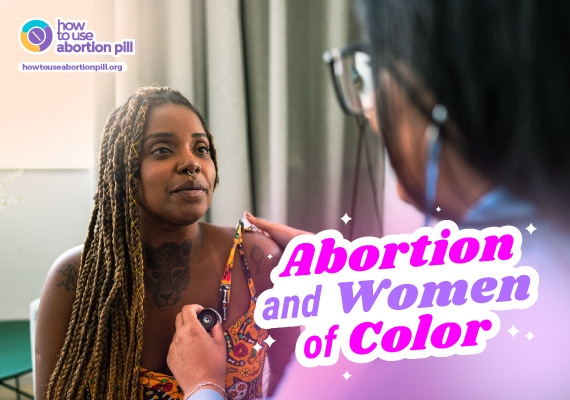Unfortunately, healthcare and women of color do not have the best relationship. Latinas are actually less likely to report that they have a chronic condition in need of ongoing care, despite their reports of a poorer health status. And in many African homes, first aid – which mostly should be administered at home before one seeks professional care – is the most used healthcare practice. People take painkillers for as long as they can to manage pain, and only go to the hospital when the pain refuses to go away. There are many factors that contribute to the disparities in the access to proper healthcare (abortion inclusive) amongst women of color.
A prime factor are the difficulties that people of color face when trying to gain access to the needed healthcare. According to a report from The World Health Organization, only 615 million people worldwide have access to needed healthcare which is less than half of Africa’s population. This makes healthcare unavailable for many women of color and almost inaccessible when it comes to abortions. In the United States for instance, health insurance among women of color is low and there is a large number of uninsured women of color. As reported by a survey made by The Kaiser Women’s Health, more than one-third of Latinas in the United States are uninsured (37%), which is over twice the rate of white women (16%). African American women are also more likely to be uninsured (20%) than white women. These higher rates of uninsurance amongst women of color were mostly related to lower rates of job-based coverage. Four in ten Latinas (44%) and one-half of African American women (52%) have employer-based insurance, compared to two-thirds of white women (66%). Because women of color are more likely to be low income, Medicaid – the joint state/federal program for the poor – is an important source of coverage, covering 17% of African American women and 12% of Latinas. Already, insurance for abortion is not easily accessible in the United states and other countries with restrictive context, as it is not included in many health plans. However, having such a low number of women of color insured makes it even more difficult to access safe abortions. The cost and inaccessibility of healthcare in many countries around the world, might push women towards unsafe abortions, which can be extremely dangerous. This is very noticeable in African communities where abortions are often not included in health insurance policies and women are expected to pay the full cost for the procedure.
Religion is another factor that can hinder women of color’s access to abortion, as religious beliefs are present in many households of color. According to a study conducted in the United States by Pew Research Center, the survey participants indicated that religion is significant to 59% of Latinos and 75% of African Americans.These percentages were higher than any other race’s. More than half (78%) of the survey respondents who turn to religion for moral guidance are people of color. Also in traditional African societies, religion informs everything, including politics, art, marriage, health, diet, dress, economics, and deaths. Unsurprisingly, many countries with a strong religious dominance are known to be anti-choice mostly because it is believed to be the “moral choice”. Due to this, access to abortion for many women of color is not easy. Many women of color result in having abortions privately or secretly because of the possible stigma that is associated with abortions amongst religious folk. The stigma, taboo and misinformation might also lead women of color in predominantly religious communities to access unsafe abortion methods, which can cause damages like hemorrhages or even death in some instances.
Moving forward, it’s essential that health plans and insurances include abortion procedures, and for women of color to have access to these insurances and safe methods of abortion. If women of color do not have to end up paying more than they could afford for safe abortions, this could prevent risky and likely catastrophic situations caused by unsafe abortion methods.
Studying the rates of abortion by race can provide insights into disparities in reproductive health care access and outcomes.
Also, if more religious bodies would understand that abortions do not equal murder, and are less judgemental of women especially those of color, the number of unsafe abortion recorded amongst women of color might reduce. Religious bodies understanding the importance of safe abortions would also take away the fear of being judged that holds a lot of women of color holstage and prevents them from making safe abortion decisions. It’s essential that women of color have access to accurate, non-stigmatized information on abortions and why they should have the right to make decisions concerning their bodies without guilt.
If you’re an individual with a uterus and looking for support on how to self manage your abortion, visit our website at howtouseabortionpill.org.
